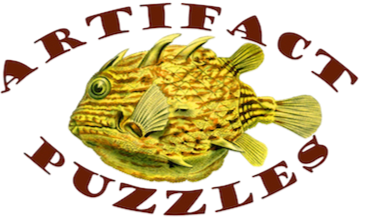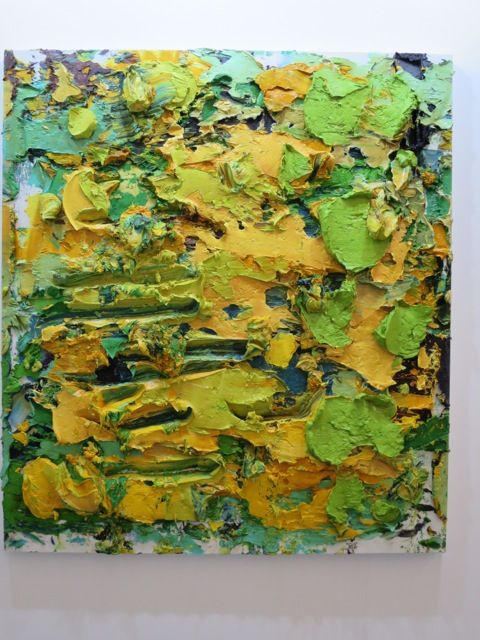 The painting looked Romantic at first glance, with allusions to Caspar David Frederich or possibly Holman Hunt. It was meticulously rendered, in oil,thickly varnished, and framed in heavily carved and gilded gold. The scene was a brilliant moonlit sky painted lush violets and pale yellows, reflected on a glittering sea. In the foreground, silhouetted on a rocky outcropping, a large tree sheltered two tiny figures. One was standing, head back, the other kneeled. Wait. They're nude, one of them has goat legs and the other … is that a man fellating a satyr? Clearly this is not Kuwait.
The painting looked Romantic at first glance, with allusions to Caspar David Frederich or possibly Holman Hunt. It was meticulously rendered, in oil,thickly varnished, and framed in heavily carved and gilded gold. The scene was a brilliant moonlit sky painted lush violets and pale yellows, reflected on a glittering sea. In the foreground, silhouetted on a rocky outcropping, a large tree sheltered two tiny figures. One was standing, head back, the other kneeled. Wait. They're nude, one of them has goat legs and the other … is that a man fellating a satyr? Clearly this is not Kuwait.
In fact, it was the lobby of Art International, the second edition of Istanbul's annual art fair, Turkey's Anatolian counterpart to Art Dubai, and one of a growing number of regional art exhibitions that bring artists from around the world to the Middle East. Why this work was selected for such prominent placement was mysterious to me. It was one of handful of realistically painted images in the show and the only one I saw that the outside the confines of the art world that could be considered porn. Little else at AI had that gotcha frisson. Were organizers trying to evoke the spirit of pagan Constantinople, or goading the prudish Islamic religiosity of the ruling Erdogan regime, which recently replaced pictures of genitalia in its sixth grade biology texts with illustrations of baby deer, rabbits and flowers. Or maybe the artist was assigned the prime real estate by chance. It certainly got me wondering, what other surprises were in store.
I was in Istanbul for the opening salvo of my twelve month international teaching certificate course, a three-day Institute about international-mindedness, Third Culture Kids and bilingualism, offered by the European Council of International Schools, assessed by Cambridge University and sanctioned by the International
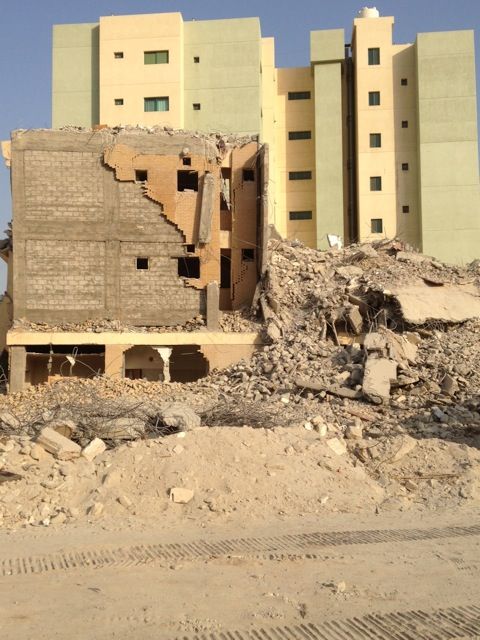 Baccalaureate. But with a free half day before the educating began, I wanted to see this heavily advertised Turkish artapalooza. Art festivals and art auctions have come to dominate the Middle Eastern art world, sucking artists and sales away from galleries, but offering a good platform from which to survey the landscape. When I was primarily an illustrator my job required specialization, the perfection of my technique and a narrow visualization style. I was selling a product, which needed to be consistent. Clients hiring me to paint a historically-accurate scene of Stanley's meeting with Livingstone would be unhappy if I shipped them a Jackson Pollack or big-eyed Keane kids. But as an IB art teacher, I need to know as much as possible about all aspects of the art world, art making, art history and art process. I need to present the art world as it is, without prejudice. Most of my students will not become artists, and rightly so since most artists end up paupers. But I want them to think like artists, because art-thinking will give them an intuitive edge in whatever field they choose. So I visited Art International in my best art-sponge frame of mind.
Baccalaureate. But with a free half day before the educating began, I wanted to see this heavily advertised Turkish artapalooza. Art festivals and art auctions have come to dominate the Middle Eastern art world, sucking artists and sales away from galleries, but offering a good platform from which to survey the landscape. When I was primarily an illustrator my job required specialization, the perfection of my technique and a narrow visualization style. I was selling a product, which needed to be consistent. Clients hiring me to paint a historically-accurate scene of Stanley's meeting with Livingstone would be unhappy if I shipped them a Jackson Pollack or big-eyed Keane kids. But as an IB art teacher, I need to know as much as possible about all aspects of the art world, art making, art history and art process. I need to present the art world as it is, without prejudice. Most of my students will not become artists, and rightly so since most artists end up paupers. But I want them to think like artists, because art-thinking will give them an intuitive edge in whatever field they choose. So I visited Art International in my best art-sponge frame of mind.
Art International was a compost heap of styles, stinking of irony – representative of today's anything-goes art ethos and elite coign of vantage. Some of what I saw was derivative and uninspired, channeling past glory: Mark Rothkoesque field paintings, Andy Warholian celebrity portraits, BarbaraKrugerish slogans, the de rigeur woman in nikab.
But a few works spoke to me.
Carlos Aires, for example, is a Spanish artist whose current output is a suite of collages that are, literally, conversations between national symbolism and media representations of the global economic, political and military catastrophe. The artist had laser cut silhouetted voids in mounted, mint condition bank notes that precisely matched high resolution media images from the web. The notes are slightly elevated above the images. They interact but they do not touch. Each collage was immaculate, matted in a wide acid free mat and simple black frame. About a hundred of these images filled the Aires booth. booth. The title of the show, laser cut like the notes into shapes that were displayed liked pinned insects, was “It's Not Just Fucking Business.” Each collage was priced at one thousand Euros.
A sampling:
A ten lira portrait of Mustafa Kemal Ataturk faces off with a Taksim square protester in gas mask.
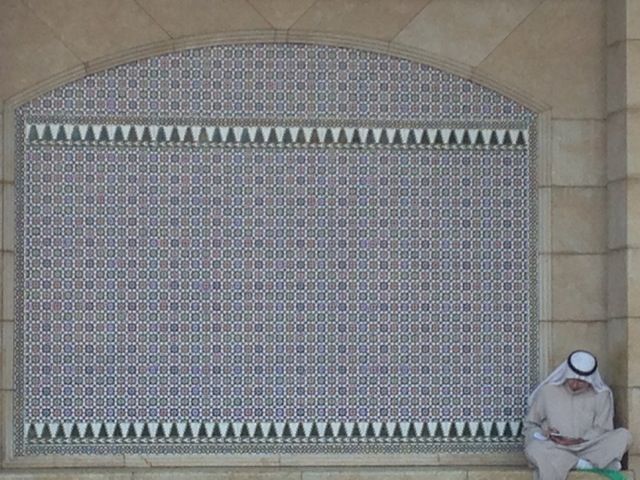
An antique hundred drachma Athena observes blue jeans and an armaentareum of Molotov cocktails, a protest against the privations of the Euro regime.
And Kuwait? A collectors’s edition one dinar note commemorating the second anniversary of the liberation of Kuwait from Saddam Hussein depicts embracing citizens and soldiers. It was juxtapose
d with the recently deceased Lebanese singer Sabah, famed for voice, her chutzpah and her ten marriages. In Kuwait she’s famous for her one month relationship with a Kuwaiti billionaire, who reputedly gave her a bouquet a day, dripping with jewels.
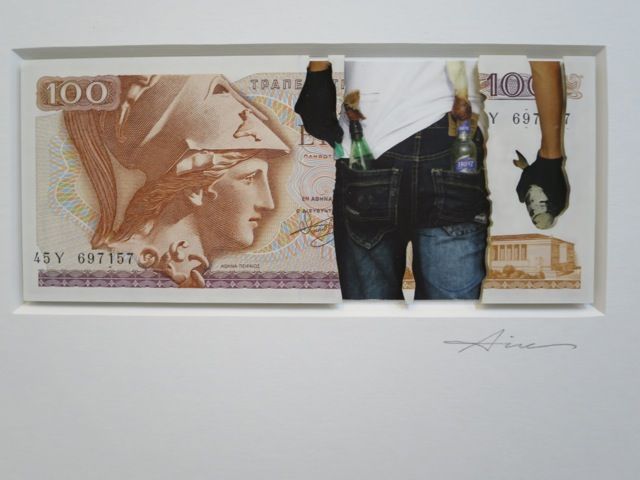
Joana Vasconcelos is one of Portugal's best known artists whose work deals with feminism and social issues. At the 2005 Venice Biennale she gained instant fame with a five-meter white chandelier made of twenty five thousand OB tampons, entitled Noiva (“The Bride” ). Her work at Art International was extravagant and decorative: huge, multi-colored and textured efflorescences of fabric, crocheted yarn, buttons, thread, and beads wrapping around and over hard-edged, geometric pillar
s and pedestals made from soldier lines of antique Portuguese ceramic tiles. “It's the female and male principles interacting,” said her agent. (I immediately thought of Colonel Zaher, one of owners of AIS Kuwait. He calls our art department, “a fungus,” -or when in a less generous mood, “a cancer” - because of our desire to decorate the school walls with student work.) The works were some of the largest at AI, but by Vasconcelos' standards, tiny. Like Cristo, her work often envelopes entire buildings.
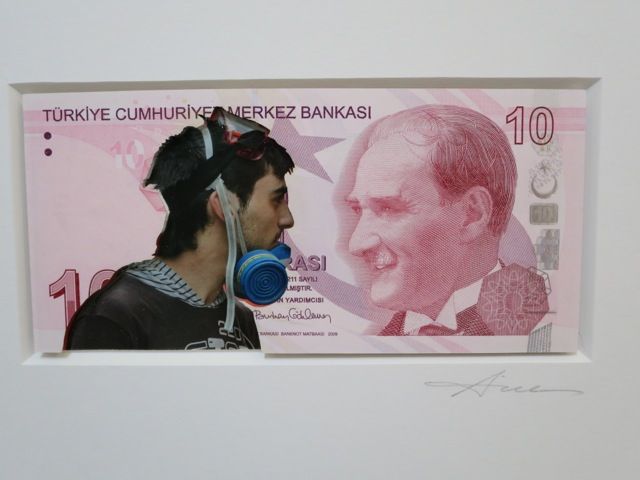
No international art exhibition would be complete without an entry from this fifteen minutes' most famous artist, China's Ai Wei Wei, the Aung San Suu Kyi of art. A vociferous critic of the Chinese government, he was arrested for tax fraud and  imprisoned for eighty-one days then, after intense international pressure, released. Although allowed to leave Beijing he is still forbidden to visit other countries. Nevertheless he had an entry in Art International, a gas mask carved from a block of white marble. I watched as one visitor scrawled a message to post with her selfie of the work. “Ai Couldn't Be Here.” Artists: so clever. So ironic.
imprisoned for eighty-one days then, after intense international pressure, released. Although allowed to leave Beijing he is still forbidden to visit other countries. Nevertheless he had an entry in Art International, a gas mask carved from a block of white marble. I watched as one visitor scrawled a message to post with her selfie of the work. “Ai Couldn't Be Here.” Artists: so clever. So ironic.
After the show I went to a bar on the Bosphorus with some friends. It was full with men in jeans and bareheaded, bare-shouldered women in shortskirts downing carafes of wine. High tide and high winds sent salt spray crashing into the windows, making the place feel a little like a citadel under attack How, I asked, in Erdogan's Turkey, could AI could show images depicting full-frontal nudity?
“Look around, said a bareheaded, bare-shouldered fellow patron, do you see anyone here in a veil? Once they would have come here, but no more. Erdogan has used Islam to divide us in half. He has nothing to fear. His side will not see your art show. Now Daesh (Arabic name for ISIS) is on the border with Turkey and is recruiting throughout Istanbul. Erdogan is not stopping them. He has an arrangement.”
“Daesh is here?” I asked.
“Daesh is everywhere,” she said, and sipped her wine.
